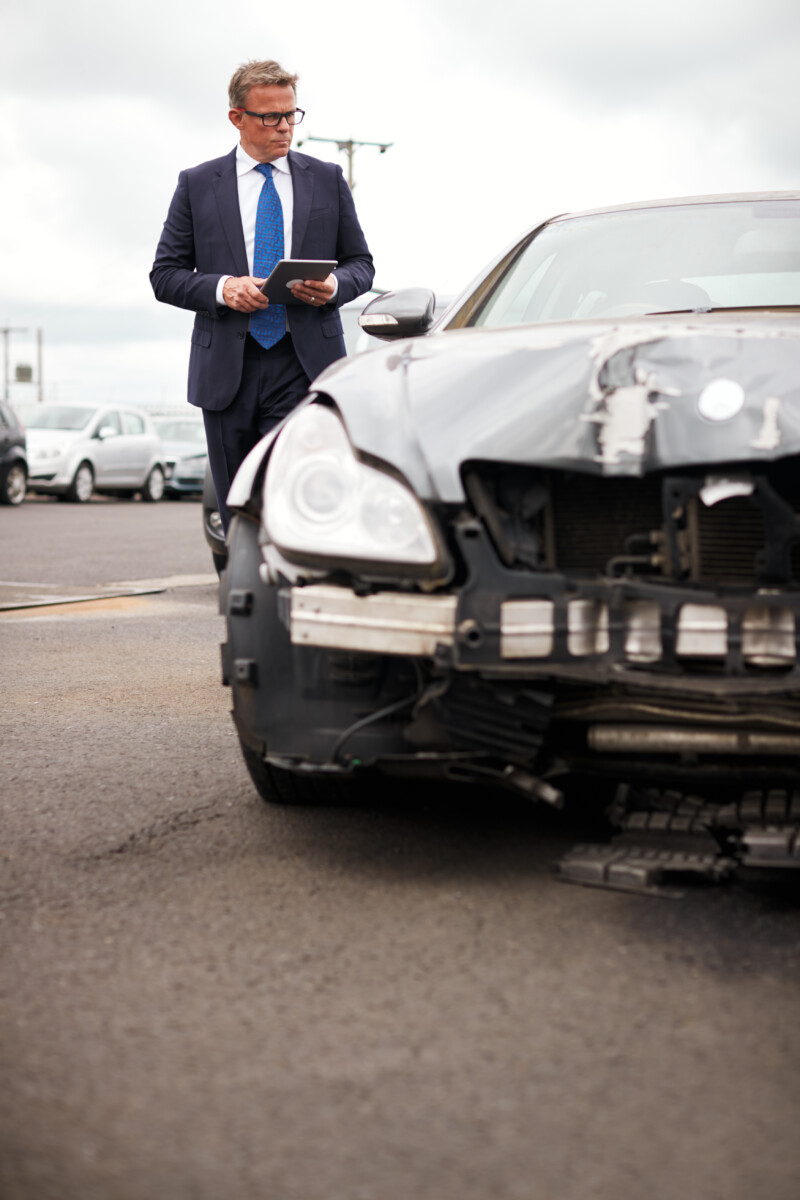MVA Motor Vehicle Accident: Don’t Settle Without a Fight

Motor vehicle accidents (MVAs) pose a significant threat on our roads, often resulting in severe injuries, fatalities, and considerable property damage. Understanding the implications of an MVA motor vehicle accident is vital for everyone—drivers, passengers, and pedestrians alike. By being informed, we can take proactive steps to minimize risks and effectively manage the aftermath.
Understanding MVA Motor Vehicle Accidents
The Impact of MVA Motor Vehicle Accidents
The consequences of MVAs extend beyond those directly involved, affecting families and communities. In the U.S., the National Highway Traffic Safety Administration (NHTSA) reported over 38,000 fatalities in 2020 alone, underscoring the need to comprehend the factors leading to these incidents.
Common Causes of MVA Motor Vehicle Accidents
- Distracted Driving: A leading cause of MVAs, distractions can arise from mobile devices, passengers, or even adjusting the radio.
- Speeding: Exceeding speed limits hampers a driver’s ability to respond to sudden changes in traffic.
- Driving Under the Influence: Alcohol and drugs impair judgment and reaction times, significantly increasing accident risks.
Recognizing these causes can empower drivers to make safer choices.
The Aftermath of an MVA Motor Vehicle Accident
- Injuries: Many accidents lead to serious injuries like whiplash and fractures.
- Legal Consequences: Drivers may face fines, license suspensions, or criminal charges.
- Financial Impact: The costs can be overwhelming, from medical bills to vehicle repairs.
Navigating the aftermath requires understanding your rights and responsibilities, and seeking legal advice can help alleviate financial burdens.
Causes of MVA Motor Vehicle Accidents
Motor vehicle accidents (MVAs) pose a serious threat on our roads, resulting in injuries, fatalities, and significant economic costs. Recognizing the causes of these accidents is essential for enhancing safety and prevention efforts. In this section, we delve into the primary factors contributing to MVA motor vehicle accidents and how we can address them.
Common Causes of MVA Motor Vehicle Accidents
Distracted Driving
Distracted driving remains a leading cause of MVAs, involving activities like texting, talking on the phone, or eating while driving.
- Statistics: The National Highway Traffic Safety Administration (NHTSA) reported 3,142 deaths due to distracted driving in 2019.
- Impact: Even brief distractions significantly increase the risk of accidents.
Speeding
Speeding is another major factor, impairing a driver’s ability to navigate safely and increasing crash severity.
- Statistics: In 2019, speeding contributed to 26% of all traffic fatalities, according to the NHTSA.
- Impact: Adhering to speed limits is crucial for safety.
Driving Under the Influence
Impaired judgment from alcohol or drugs leads to dangerous driving conditions.
- Statistics: In 2019, 10,142 fatalities were linked to alcohol-impaired driving.
- Impact: Responsible behavior can prevent many MVAs.
Weather Conditions
Adverse weather significantly impacts driving safety.
- Statistics: Weather-related crashes account for over 1.2 million accidents annually.
- Impact: Adjusting driving habits in poor weather is essential for safety.
By understanding these causes, we can implement strategies to reduce MVAs and promote safer driving practices.
Statistics on MVA Motor Vehicle Accidents
Motor vehicle accidents (MVAs) are a major global concern, affecting individuals, families, and healthcare systems alike. Understanding MVA statistics is crucial for recognizing their prevalence and the necessity for road safety measures. According to the World Health Organization, road traffic injuries result in approximately 1.35 million deaths annually, underscoring the urgent need for awareness and preventive actions.
Overview of MVA Statistics
MVAs are among the leading causes of injury and death worldwide. In the U.S. alone, over 38,000 fatalities occurred in 2020, with an estimated 4.4 million people requiring medical attention due to injuries. These alarming figures highlight the critical need for effective road safety campaigns.
Demographics of MVA Victims
Young adults aged 16-24 face the highest risk of fatal MVAs, and male drivers are statistically more likely to be involved in such accidents. Targeting educational programs towards these demographics can help mitigate risks.
Economic Impact
The economic burden of MVAs in the U.S. is estimated at $871 billion annually, considering medical costs, lost productivity, and legal expenses. Each fatality costs society about $1.4 million, emphasizing the significant human and financial toll of MVAs. These statistics reinforce the necessity for comprehensive road safety strategies to reduce accidents and their impacts.
Impact of MVA Motor Vehicle Accidents on Victims
Motor vehicle accidents (MVAs) pose a significant threat in our fast-paced society, leading to severe consequences for victims that extend beyond physical injuries to emotional and financial distress. Understanding these impacts is vital for victims and their families as they cope with the aftermath.
The Physical Impact of MVAs
Injuries Sustained
- Whiplash and neck injuries
- Broken bones
- Traumatic brain injuries
- Spinal cord injuries
The physical consequences of an MVA can be profound, with many victims requiring extensive medical treatment. According to the National Highway Traffic Safety Administration (NHTSA), over 2.3 million people were injured in motor vehicle crashes in 2020, often leading to long-term disabilities that affect daily life and work capabilities.
The Emotional and Psychological Effects
Mental Health Challenges
- Post-Traumatic Stress Disorder (PTSD)
- Anxiety and depression
- Survivor’s guilt
The emotional fallout from an MVA can be as debilitating as physical injuries. Many victims suffer from PTSD, anxiety, and depression, with studies indicating that nearly 30% of those involved in serious MVAs develop PTSD, complicating their recovery and relationships.
Financial Consequences of MVAs
Economic Burden
- Medical expenses
- Lost wages
- Vehicle repair costs
The financial burden of an MVA can be overwhelming, with victims facing high medical bills, lost income, and vehicle repair costs. The CDC estimates that motor vehicle crashes cost society over $99 billion annually in medical care and lost productivity, adding to the stress for victims and their families.
Preventive Measures for MVA Motor Vehicle Accidents
Motor vehicle accidents (MVAs) pose a significant threat on our roads, resulting in injuries, fatalities, and considerable economic costs. To enhance road safety, it is essential to implement effective preventive measures that can help reduce the occurrence of mva motor vehicle accidents.
Awareness and Education
- Driver Education Programs: Comprehensive driver education can significantly lower accident risks by teaching essential road safety skills.
- Public Awareness Campaigns: Initiatives that highlight the dangers of distracted driving, speeding, and driving under the influence can positively influence driver behavior.
According to the National Highway Traffic Safety Administration (NHTSA), about 29% of traffic fatalities in the U.S. involve alcohol impairment, underscoring the need for increased awareness.
Vehicle Maintenance
- Regular Inspections: Routine vehicle inspections can prevent mechanical failures that lead to accidents.
- Tire Checks: Proper tire maintenance is crucial for safe driving.
The NHTSA indicates that vehicle-related issues contribute to roughly 20% of crashes, making regular maintenance vital.
Adhering to Traffic Laws
- Speed Limits: Obeying speed limits can significantly reduce accident likelihood.
- Use of Seatbelts: Wearing seatbelts can lower the risk of serious injury or death by 45%, according to the CDC.
Adhering to traffic laws is essential for road safety, and proper seatbelt use can save thousands of lives annually.
FAQs: MVA Motor Vehicle Accident
Q1: What is the meaning of MVA in accident?
A: MVA stands for Motor Vehicle Accident, which refers to any collision involving cars, trucks, motorcycles, or other vehicles on public roads.
Q2: Does Medicare pay if you are in a car accident?
A: Yes, but conditionally. Medicare may pay for accident-related care initially, but they expect reimbursement if a settlement or insurance payout occurs later.
Q3: What is considered a motor vehicle accident?
A: An MVA includes any incident involving collisions between vehicles, or a vehicle and a pedestrian, cyclist, or object. It covers fender-benders, major crashes, and hit-and-runs.
Q4: What not to say to the insurance company after an accident?
A: Avoid saying:
-
“I’m sorry” (could imply fault)
-
“I feel fine” (injuries may appear later)
-
Giving recorded statements without legal advice
-
Accepting blame or speculating about the cause
Final Thoughts
Understanding what an MVA (motor vehicle accident) involves is key to protecting your legal and medical rights. Whether you’re filing an insurance claim or dealing with Medicare, knowing what to say—and what not to—can protect your case and your compensation.
Time may be limited to file your claim—get your free legal review now at LegalCaseReview.com or call 📞 (833) 670-8682.


